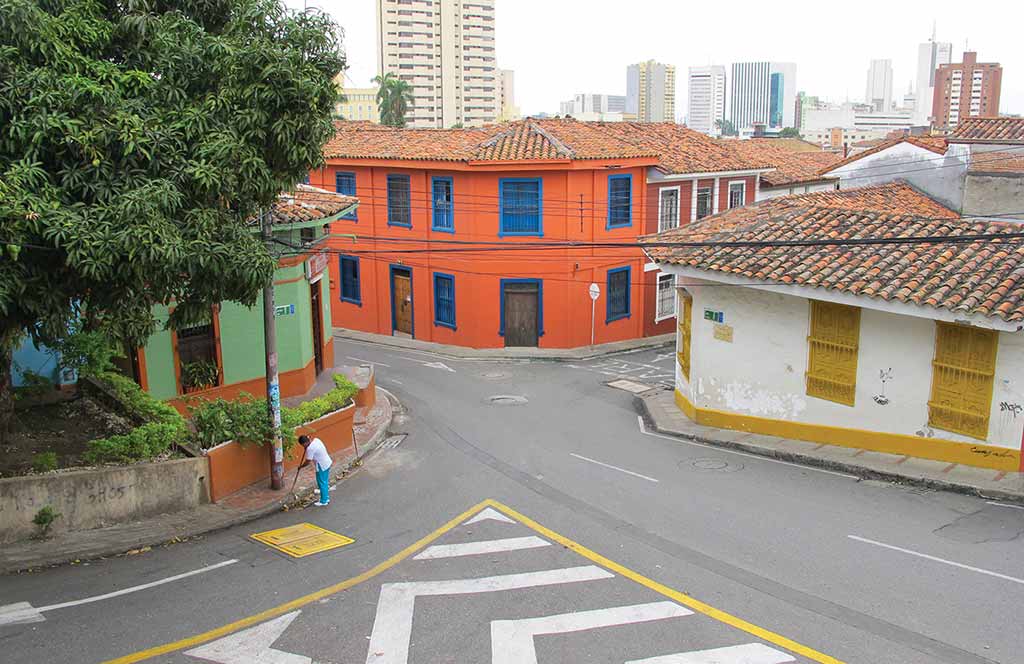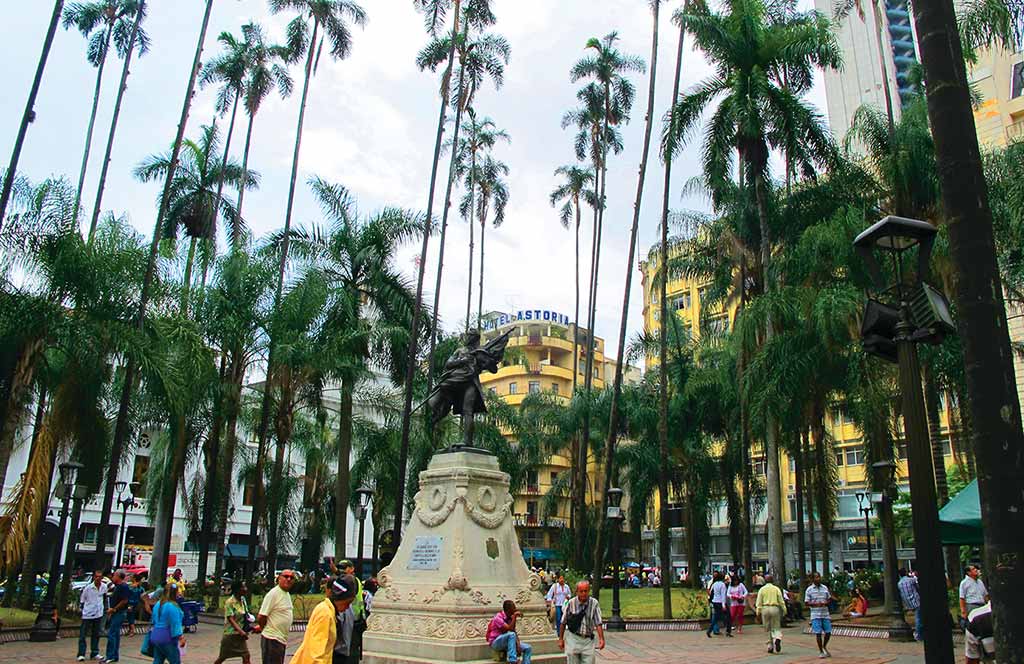Cali’s relaxed place is evident everywhere you go in this diverse city of three million. It may be the infernal heat slowing everyone down, without regard to tinto (coffee) intake. Here in the Valle del Cauca, where sugarcane fields go on forever, you’re far removed from uptight Bogotá and over-ambitious Medellín. In a swipe at those two cities, locals like to say that, “Cali es Cali y lo demás es loma” (“Cali is Cali but those other cities are just hills”).

The charming neighborhood of San Antonio in Cali. Photo © Andrew Dier.
Incorporating a little salsa into your visit to Cali is a necessity if you want to get to know this seductive city, its people, and their ways.While the colonial churches of La Merced and San Antonio are some of the loveliest you will see in Colombia, Cali is not a city packed with must-see sights. Yet tourists keep falling in love with the “Sultan of the Valley.” Is it that late refreshing afternoon breeze? The people? Or is it the salsa?Cali is, indeed, all about salsa. That’s pretty clear once you hop in any cab in the city. The music is turned on, and there’s an 80 percent chance you’ll hear the driver singing along to the hypnotic rhythms of conga drums, bongos, and timbales. At the bus terminal, muchachos working for the bus companie break into some fancy footwork as they wait for customers. In hotels, housekeeping staff walk the corridors cheerfully singing.
Cali is the world’s salsa capital. Incorporating a little salsa into your visit to Cali is a necessity if you want to get to know this seductive city, its people, and their ways.
Nearly all of the city’s tourist attractions are located in the Centro, in three areas in particular: La Merced, La Ermita, and Plaza Cayzedo/Iglesia San Francisco. You can visit all these areas on foot in one day. The Centro is brimming with activity during weekdays. Avoid the midday heat by planning your visit in the morning or late afternoon. Avoid lingering downtown after dark.

Plaza Cayzedo is filled with towering palms. Photo © Andrew Dier.
Inviting neighborhoods such as San Antonio, Granada, and El Peñon may lack attractions but are a delight to get to know. Within a 10- to 15-minute cab ride from the Centro, these tree-lined barrios are filled with restaurants, shops, and hotels. Late-night activity on weekends tends to shift to northern areas (not far from Granada) such as Menga and Yumbo.
You may have difficulty figuring out the lay of the land in Cali, as it is not as straightforward as other cities in Colombia. The Río Cali (actually more of a stream), the Tres Cruces hill, the Torre de Cali, and the Intercontinental Cali are well-known points of reference.
The average temperature in caliente Cali is about 24°C (75°F); however, the average daily high is a sizzling 30°C (86°F). But 4:30pm-6:30pm, when the sun begins its descent over the western Cordillera and into the Pacific, the drop in temperature (to around 19°C/66°F), softening of the sun’s rays, and a gentle breeze combine to make the weather absolutely delicioso. In residential areas like San Antonio, the perfect temps are a magnet drawing people outside. Plan your day accordingly: Do all your necessary emailing and online time-wasting during the heat of the day or later at night, and make that late afternoon stroll an event.
Excerpted from the First Edition of Moon Colombia.